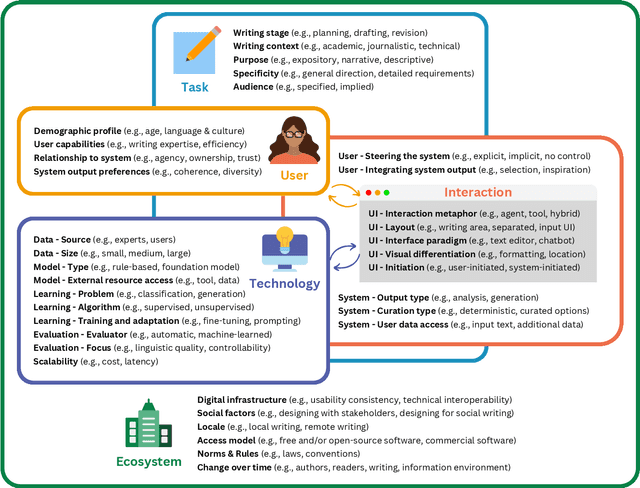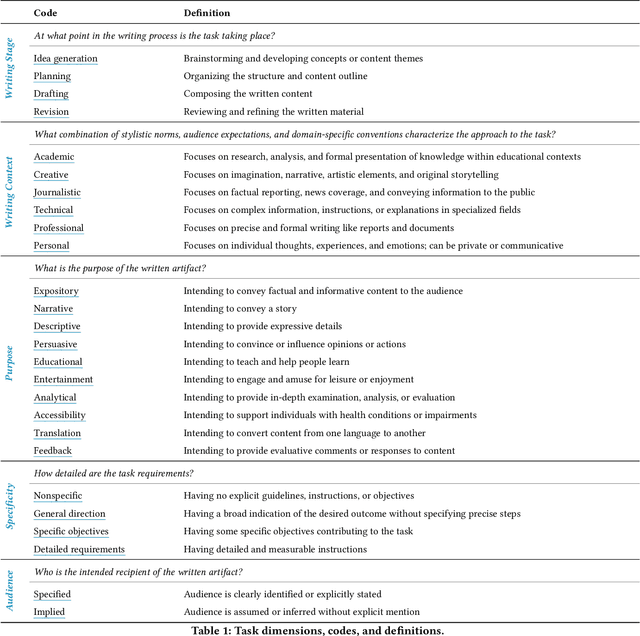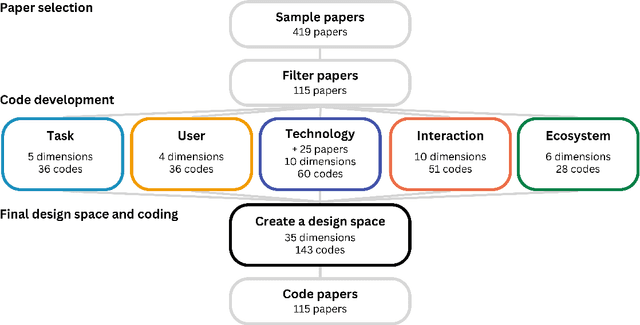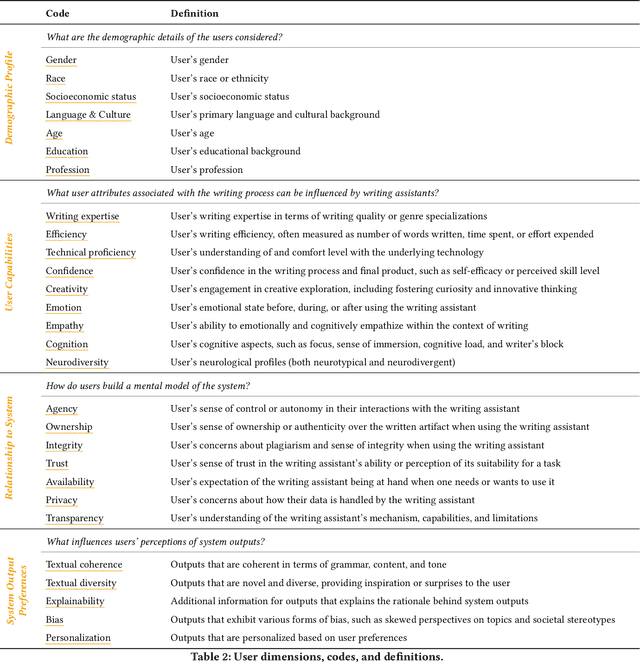David Zhou
A Design Space for Intelligent and Interactive Writing Assistants
Mar 26, 2024



Abstract:In our era of rapid technological advancement, the research landscape for writing assistants has become increasingly fragmented across various research communities. We seek to address this challenge by proposing a design space as a structured way to examine and explore the multidimensional space of intelligent and interactive writing assistants. Through a large community collaboration, we explore five aspects of writing assistants: task, user, technology, interaction, and ecosystem. Within each aspect, we define dimensions (i.e., fundamental components of an aspect) and codes (i.e., potential options for each dimension) by systematically reviewing 115 papers. Our design space aims to offer researchers and designers a practical tool to navigate, comprehend, and compare the various possibilities of writing assistants, and aid in the envisioning and design of new writing assistants.
Ensuring User-side Fairness in Dynamic Recommender Systems
Aug 29, 2023Abstract:User-side group fairness is crucial for modern recommender systems, as it aims to alleviate performance disparity between groups of users defined by sensitive attributes such as gender, race, or age. We find that the disparity tends to persist or even increase over time. This calls for effective ways to address user-side fairness in a dynamic environment, which has been infrequently explored in the literature. However, fairness-constrained re-ranking, a typical method to ensure user-side fairness (i.e., reducing performance disparity), faces two fundamental challenges in the dynamic setting: (1) non-differentiability of the ranking-based fairness constraint, which hinders the end-to-end training paradigm, and (2) time-inefficiency, which impedes quick adaptation to changes in user preferences. In this paper, we propose FAir Dynamic rEcommender (FADE), an end-to-end framework with fine-tuning strategy to dynamically alleviate performance disparity. To tackle the above challenges, FADE uses a novel fairness loss designed to be differentiable and lightweight to fine-tune model parameters to ensure both user-side fairness and high-quality recommendations. Via extensive experiments on the real-world dataset, we empirically demonstrate that FADE effectively and efficiently reduces performance disparity, and furthermore, FADE improves overall recommendation quality over time compared to not using any new data.
Topological Augmentation for Class-Imbalanced Node Classification
Aug 27, 2023Abstract:Class imbalance is prevalent in real-world node classification tasks and often biases graph learning models toward majority classes. Most existing studies root from a node-centric perspective and aim to address the class imbalance in training data by node/class-wise reweighting or resampling. In this paper, we approach the source of the class-imbalance bias from an under-explored topology-centric perspective. Our investigation reveals that beyond the inherently skewed training class distribution, the graph topology also plays an important role in the formation of predictive bias: we identify two fundamental challenges, namely ambivalent and distant message-passing, that can exacerbate the bias by aggravating majority-class over-generalization and minority-class misclassification. In light of these findings, we devise a lightweight topological augmentation method ToBA to dynamically rectify the nodes influenced by ambivalent/distant message-passing during graph learning, so as to mitigate the class-imbalance bias. We highlight that ToBA is a model-agnostic, efficient, and versatile solution that can be seamlessly combined with and further boost other imbalance-handling techniques. Systematic experiments validate the superior performance of ToBA in both promoting imbalanced node classification and mitigating the prediction bias between different classes.
 Add to Chrome
Add to Chrome Add to Firefox
Add to Firefox Add to Edge
Add to Edge